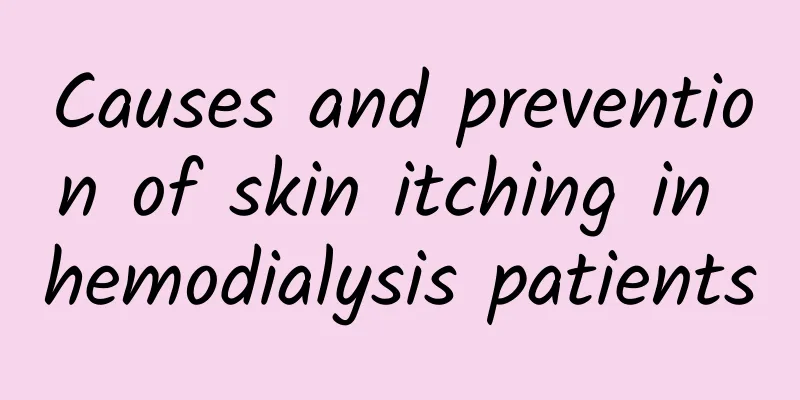Causes and prevention of skin itching in hemodialysis patients

|
1. Common causes Accumulation of uremic toxins Inadequate clearance of medium-molecular toxins (such as β2-microglobulin) and large-molecular toxins stimulates the nerve endings of the skin. Inadequate dialysis leads to accumulation of toxins and aggravates skin inflammation. Calcium-phosphorus metabolism disorder and secondary hyperparathyroidism Hyperphosphatemia leads to calcium and phosphate deposition, which irritates the skin; elevated parathyroid hormone (PTH) directly stimulates the sensory nerves of the skin. Dry skin (xeroderma) Dialysis patients have atrophy of sebaceous glands, decreased sweat gland function, damaged skin barrier, and are easily susceptible to external stimuli. Immune and inflammatory response Micro-inflammatory state (such as increased IL-6 and TNF-α) and mast cell activation releasing histamine. Allergic reactions Allergy to dialyzer membrane materials (such as AN69 membrane), heparin or ethylene oxide residues. Neuropathy Uremia causes peripheral neuropathy, and abnormal sensory conduction causes itching. Other factors Iron deficiency, vitamin A excess, combined diabetes or liver disease, etc. 2. Treatment Plan Treatment should be individualized according to the cause. Common methods include: Improve dialysis adequacy Optimize dialysis regimen: extend dialysis time (such as daily dialysis), increase blood flow, and use high-flux dialyzers (which are more effective in removing middle-molecular toxins). Control calcium and phosphorus metabolism disorders Phosphorus-lowering treatment : strict low-phosphorus diet (<800 mg/day) + phosphate binders (lanthanum carbonate, sevelamer). Control PTH : calcimimetics (cinacalcet), active vitamin D (calcitriol), or parathyroidectomy (refractory hyperparathyroidism). Skin Care & Moisturizing Use a fragrance-free moisturizer (such as urea cream, petroleum jelly) daily and avoid hot baths and alkaline soaps. Drug treatment Antihistamines : Cetirizine, loratadine (limited effectiveness for non-histamine-mediated pruritus). Gabapentin/pregabalin : Regulates neurogenic pruritus, and the dose needs to be adjusted according to renal function. κ-opioid receptor agonists : nalfurafine (approved for uremic pruritus in Japan and other regions). Topical treatment : capsaicin cream (inhibits substance P), tacrolimus ointment (immunomodulatory). Phototherapy (ultraviolet B radiation) Relieves itching by suppressing skin inflammation and nerve sensitivity, 2-3 times a week. Allergy Management Replace the dialysis membrane with one with good biocompatibility (such as polysulfone membrane) and avoid tubing sterilized with ethylene oxide. 3. Preventive measures Strict phosphorus control diet Avoid processed foods, dairy products, nuts and other high-phosphorus foods, and blanch them when cooking to remove phosphorus. Adequate dialysis and toxin removal Kt/V and β2-microglobulin levels were assessed regularly, and hemoperfusion or HDF (hemodiafiltration) was used if necessary. Skin barrier protection Maintain environmental humidity (40-60%), wear cotton clothing, and avoid scratching to prevent infection. Regular monitoring indicators Monitor serum calcium, phosphorus, and PTH monthly to maintain calcium-phosphorus product <55 mg²/dL² and iPTH 150-300 pg/mL. Psychological interventions Pruritus is often accompanied by anxiety/depression and requires psychological counseling or drug intervention (such as SSRI drugs). IV. Handling of special situations For refractory pruritus , try opioid receptor modulators (eg, naltrexone) or thalidomide (beware of neurotoxicity). Combined with diabetes : Strengthen blood sugar control, and α-lipoic acid can be used in combination with neuropathic pruritus. Iron deficiency : IV iron supplementation to achieve ferritin >100 ng/mL and transferrin saturation >20%. |
>>: An article on amniotic fluid embolism
Recommend
What inflammation can cause leucorrhea to bubble?
If there is some inflammation in the female repro...
How to regulate postpartum puffiness_How to deal with postpartum puffiness
Puffiness is a common problem nowadays, but it al...
Is it good for pregnant women to take a bath every day?
Postpartum women sweat very easily, and their act...
How to treat fungal vaginitis?
Candidal vaginitis is relatively common and is al...
"H1N1" is coming, parents should know these
This is the 4721st article of Da Yi Xiao Hu 1. Wh...
These 3 types of people should never perm their hair easily!
As the saying goes, the three things you need for...
Causes and treatments of lochia turning yellow and then red
Lochia may occur after childbirth, after abortion...
What are the early symptoms of cervical fibroids?
Cervical fibroids mostly occur in the uterus. The...
Why are more and more people suffering from allergies? It’s all because of them!
Why do I suddenly have allergies when I was fine ...
9 bad habits that cause women's breasts to sag
Breasts are a woman's second face. Many women...
Does pelvic inflammatory disease bleed?
Women's physiological conditions are very spe...
What are the advantages and disadvantages of back opening for women?
Maybe many young people don’t know what back open...
There is a small meat ball next to the vulva
The genitals are the part of the body most prone ...
Nose bleeding during pregnancy affects the fetus
During pregnancy, many women experience nose blee...









